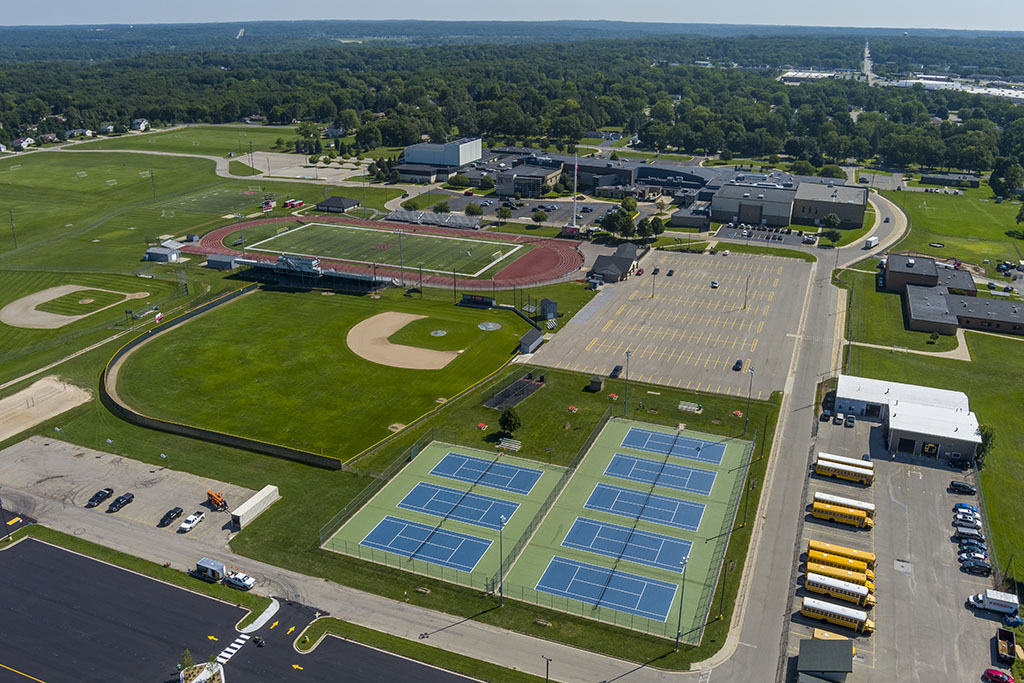Building Your Next Athletic Facility

Designing and building a new K-12 athletic facility requires careful planning and consideration to ensure functionality, safety and sustainability. Athletic facilities are significantly more complex to construct than typical classrooms and common spaces, and partnering early with an experienced construction manager can make all the difference in your project outcome.
As you begin the process of designing and building a new athletic facility, keep these key elements in mind:
Purpose and Function
The first consideration is to determine the purpose and function of the facility. Are you building a multi-sport facility, or is it specialized for a particular sport? Is it intended for external community use? New and renovated facilities must meet modern standards and the needs of tomorrow’s athletes. Consider aspects such as equipment sensors, digital training programs, LED screens and scoreboards, capacity to livestream events and more. Doing so can help you create a space that will maximize your wants and needs while managing budget expectations.
Venue Details
Details of a new or renovated venue need to consider not only athlete support, but amenities that impact fan and spectator engagement. Athletes need training rooms and quality facilities to perform at their best, while spectator considerations should address accessibility, safety, proximity to other venues, lighting, security, viewing angles, Wi-Fi access, restrooms, concessions, merchandise and more.
It’s also important to evaluate the surrounding environment, including noise levels, layout considerations, mobility patterns and potential sources of distraction to ensure the facility is conducive to both athletic and spectator activities.
Design and Layout
The design and layout of the athletic facility should be planned to accommodate user needs. This includes considerations such as the size and type of playing surfaces, the number and size of the courts or fields, the equipment required and the seating capacity. Many facilities are now multi-purpose — designed to handle the wear of multiple events. An example is a highly durable turf field that can accommodate soccer, football and lacrosse events without the wear and potential damage those sports would cause on a single grass field. Other factors, including locker rooms for officials, restrooms, storage, training rooms and maintenance areas should also be considered.
Safety
Safety should be a top priority when designing and building an athletic facility. This includes ensuring the facility meets all safety standards and regulations, as well as implementing safety measures such as emergency exits, first aid stations, AED placements, access control and more. We work with architects to ensure safety is prioritized in all aspects of construction and use for athletes and fans.
Sustainability
As with any building project, sustainability should be a consideration when designing and building an athletic facility. This includes using sustainable materials and energy-efficient systems, designing for water conservation, and incorporating green spaces and landscaping. Design factors including stormwater management and energy consumption are important. Facilities may opt for LED lighting, natural light use or solar to enhance the sustainable approach. Sustainable design practices not only reduce the environmental impact of the facility, but also help to create a healthier and more enjoyable space. Partnering with a construction management firm with broad athletics construction experience will allow you to make choices that are sustainable while meeting your budget and design standards.
Building an athletic facility is a unique challenge, and your construction manager needs to take many factors into consideration to ensure successful project delivery. With proper planning and foresight, Rockford Construction will help you create amazing spaces for your students to practice and compete.
previous Post
previous Post